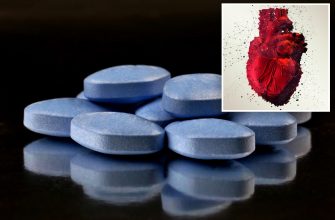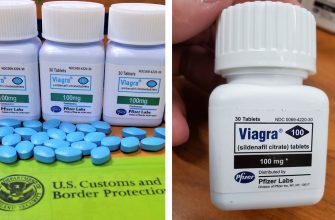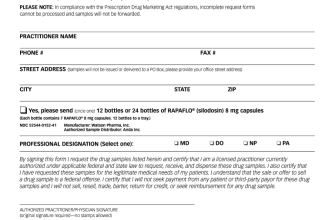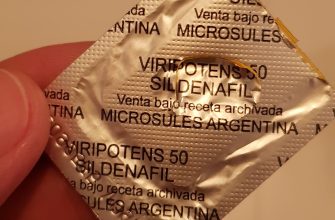Reducing your Prednisone dosage from 20mg requires a careful, planned approach. We recommend consulting your doctor to create a personalized tapering schedule, tailored to your specific health needs and medical history. This schedule will typically involve gradually decreasing your daily dose over several weeks or months.
Common tapering schedules involve reductions of 2.5mg or 5mg every few days or weeks. Your physician will monitor your progress, adjusting the schedule as needed based on your response to the medication reduction and any potential side effects. Expect potential side effects like fatigue, joint pain, or mood changes during the tapering process, and communicate these openly with your doctor.
Never abruptly stop taking Prednisone without medical supervision. Sudden cessation can lead to serious health consequences, including adrenal insufficiency. Closely following your doctor’s instructions is paramount for a safe and effective taper. Your doctor might also recommend supplementary medication or lifestyle changes to mitigate potential side effects and support your body during this transition.
Remember: This information is for guidance only and does not substitute professional medical advice. Always discuss your Prednisone taper plan with your doctor or other qualified healthcare provider before making any changes to your medication regimen. They can provide the most accurate and appropriate guidance for your individual situation.
- Prednisone 20mg Taper: A Detailed Guide
- Understanding Your Taper Schedule
- Managing Potential Side Effects
- Maintaining a Healthy Lifestyle
- Open Communication with Your Doctor
- Monitoring Your Progress
- Alternative Supportive Measures
- Understanding Prednisone and its Side Effects
- Why a Taper is Necessary
- Creating a Safe and Effective Taper Schedule
- Understanding the Taper Process
- Monitoring Your Progress
- Additional Considerations
- Common Taper Schedules (Examples)
- Managing Withdrawal Symptoms
- Monitoring Your Progress During the Taper
- Potential Complications and When to Seek Medical Advice
- Maintaining Long-Term Health After Prednisone
- Dietary Adjustments
- Exercise and Physical Activity
- Monitoring Your Health
- Managing Potential Side Effects
- Lifestyle Changes
- Supporting Your Immune System
- Maintaining Communication
Prednisone 20mg Taper: A Detailed Guide
Begin your Prednisone 20mg taper under strict medical supervision. Your doctor will design a personalized plan, adjusting the reduction based on your individual response and health status. A common approach involves decreasing your dose by 2.5mg every few days or week.
Understanding Your Taper Schedule
Expect gradual reductions. Rapid tapering can trigger serious withdrawal symptoms. Your doctor will monitor your progress closely, potentially adjusting the schedule if needed. Commonly used schedules include a 2.5mg decrease every 3-7 days or even longer, depending on the drug’s duration in your system and your body’s response.
Managing Potential Side Effects
Anticipate potential side effects like fatigue, joint pain, muscle weakness, and mood changes. These are often manageable with careful monitoring and adjustments. Your doctor may recommend strategies to mitigate discomfort, such as increased rest and nutritional support. Report any concerning symptoms immediately.
Maintaining a Healthy Lifestyle
Support your body during the taper. Prioritize a balanced diet rich in fruits, vegetables, and lean protein. Regular, moderate exercise can aid in managing fatigue and improve overall well-being. Sufficient sleep is also critical for your body’s recovery process.
Open Communication with Your Doctor
Regular check-ups are paramount. Schedule appointments with your doctor for monitoring your progress and addressing any concerns that may arise. Honest communication about your symptoms and experiences is extremely helpful to ensure a safe and effective taper.
Monitoring Your Progress
Keep a detailed record of your daily dose, any side effects experienced, and your overall well-being. Sharing this information with your physician empowers them to make informed decisions about your taper schedule and manage potential complications effectively.
Alternative Supportive Measures
Explore additional support if necessary. Your doctor might suggest other medications to help alleviate withdrawal symptoms. For instance, they may advise certain pain relievers or recommend therapies to address psychological adjustments.
Understanding Prednisone and its Side Effects
Prednisone, a corticosteroid, powerfully reduces inflammation. However, it’s crucial to be aware of potential side effects. These vary depending on dosage and duration of use.
Common side effects include weight gain, particularly around the midsection, and increased appetite. Fluid retention can lead to swelling in the face, legs, and ankles. Mood changes, such as irritability or anxiety, are also possible. Increased blood sugar levels are a concern, especially for those with diabetes. You might experience sleep disturbances, including insomnia or difficulty falling asleep.
Less common, but more serious, side effects include increased risk of infection due to immune system suppression, high blood pressure, and thinning of bones (osteoporosis). Rarely, Prednisone can cause cataracts or glaucoma. Stomach ulcers are another potential complication. Skin changes like thinning or bruising are also reported.
Regular monitoring by your doctor is paramount. They can adjust your dosage and monitor for any concerning side effects. Open communication with your physician about any symptoms you experience is vital. Lifestyle modifications, such as regular exercise and a balanced diet, can mitigate some side effects.
Remember, this information does not replace medical advice. Always consult your doctor or pharmacist before starting, stopping, or changing any medication.
Why a Taper is Necessary
Abruptly stopping Prednisone can cause serious health problems. Your body needs time to adjust to producing its own cortisol again. A gradual reduction, or taper, allows your adrenal glands to resume normal function.
Prednisone suppresses your body’s natural cortisol production. Stopping suddenly leads to adrenal insufficiency, resulting in fatigue, weakness, nausea, and even life-threatening low blood pressure.
A carefully planned taper minimizes these risks. Your doctor will create a personalized schedule, usually reducing the dosage by small amounts over several weeks or months. This gradual decrease helps your body adapt smoothly.
The length of your taper depends on several factors, including your dosage, duration of Prednisone use, and overall health. Close monitoring by your doctor is important to ensure you tolerate the tapering process well and adjust your schedule as needed.
Remember: Never alter your Prednisone dosage without consulting your physician. They’ll guide you through a safe and effective taper to avoid potentially dangerous side effects.
Following your doctor’s instructions is paramount for a successful and healthy recovery.
Creating a Safe and Effective Taper Schedule
Begin by consulting your doctor. They will personalize your Prednisone 20mg taper schedule based on your individual health history and current condition. This is paramount.
Understanding the Taper Process
Generally, tapering involves gradually reducing your Prednisone dosage over several weeks or months. Rapid reductions can lead to withdrawal symptoms, such as fatigue, muscle weakness, joint pain, and nausea. Slow and steady wins the race here.
A common approach involves decreasing the dose by 2.5mg to 5mg every few days to a few weeks. Your physician might suggest a slower reduction if you have a history of adrenal insufficiency or experience significant withdrawal symptoms. Some schedules might use even smaller decrements, for example, 1mg every other day, if necessary.
Monitoring Your Progress
Regular monitoring is key. Schedule follow-up appointments with your doctor to discuss your progress and adjust the taper as needed. Report any adverse effects promptly. They can provide support and modify the plan to ensure your safety and comfort.
Pay attention to your body. Record your daily dosage and any symptoms you experience in a journal. This will provide valuable information for you and your doctor.
Additional Considerations
Maintain a healthy lifestyle during your taper. This includes adequate rest, a balanced diet, and regular, gentle exercise. These habits support your body’s adaptation to lower Prednisone levels.
Discuss potential interactions with other medications you are taking with your doctor. They can help prevent unwanted side effects or complications.
Common Taper Schedules (Examples)
Your doctor will personalize your prednisone taper, but these examples illustrate common approaches. Always follow your physician’s instructions.
| Schedule | Daily Dosage (mg) | Duration (Days) | Notes |
|---|---|---|---|
| Rapid Taper | 20, 15, 10, 5, 0 | 5 | Suitable for short-term use, potential for increased withdrawal symptoms. |
| Moderate Taper | 20, 17.5, 15, 12.5, 10, 7.5, 5, 2.5, 0 | 9 | Balances speed and symptom management. |
| Slow Taper | 20, 18, 16, 14, 12, 10, 8, 6, 4, 2, 0 | 11 | Minimizes withdrawal risks, longer treatment period. |
| Alternating-Day Taper | 20, 15, 10, 5, 0 (every other day initially, then daily once low doses are reached) | Variable, depends on the physician’s plan | Reduces overall steroid exposure, requires careful monitoring. |
These are just examples; your doctor might adjust the dosage or schedule based on your individual needs and response to treatment. Regularly monitor for withdrawal symptoms such as fatigue, muscle weakness, or joint pain, and report any concerns to your healthcare provider immediately.
Managing Withdrawal Symptoms
Reduce Prednisone gradually, following your doctor’s precise tapering schedule. This minimizes the risk of intense withdrawal.
Expect potential symptoms. These can include fatigue, muscle aches, joint pain, and mood changes. Knowing what to anticipate helps you manage them.
- Fatigue: Prioritize rest. Short naps throughout the day can be beneficial. Gradually increase activity levels as tolerated.
- Muscle and Joint Pain: Gentle exercise, like walking, can help. Over-the-counter pain relievers such as acetaminophen or ibuprofen may offer some relief. Always consult your doctor before taking any new medications.
- Mood Changes: Increased irritability, anxiety, or depression are possible. Maintain open communication with your doctor or therapist. Consider joining a support group for added emotional support.
Maintain a healthy lifestyle. This includes a balanced diet, regular hydration, and sufficient sleep. A healthy lifestyle supports your body’s natural healing processes.
- Diet: Focus on nutrient-rich foods, including fruits, vegetables, and lean proteins.
- Hydration: Drink plenty of water throughout the day.
- Sleep: Aim for 7-9 hours of quality sleep each night. Establish a relaxing bedtime routine.
Closely monitor your symptoms and report any concerning changes to your doctor immediately. Don’t hesitate to seek medical attention if you experience significant discomfort or worsening symptoms. Your doctor can adjust your tapering schedule or provide additional support if needed.
Monitoring Your Progress During the Taper
Regularly weigh yourself. Weight gain is a common side effect of Prednisone, and tracking your weight helps monitor fluid retention. Aim for weekly weigh-ins at the same time of day.
Monitor your blood pressure. Prednisone can elevate blood pressure. Keep a log of your daily readings. Consult your doctor immediately if you notice significant increases.
Observe your blood sugar levels. Prednisone impacts blood sugar, potentially causing hyperglycemia. Check your blood sugar as advised by your doctor, especially if you have diabetes.
Pay close attention to your mood and mental state. Prednisone can affect mood, causing irritability, anxiety, or depression. Talk to your doctor if you experience any significant changes in your mental well-being.
Track your energy levels. Fatigue is a common side effect. Note any fluctuations in your energy throughout the day and week. This helps identify potential issues and inform your doctor.
Document any side effects. Keep a detailed record of any new or worsening symptoms. This information will be valuable to your doctor in managing your taper.
Maintain open communication with your doctor. Regularly scheduled check-ups are key. Report any concerns or changes immediately.
Potential Complications and When to Seek Medical Advice
Monitor yourself closely for signs of infection, like fever, chills, or persistent cough. Report these immediately. Increased blood sugar is a possibility, especially if you have diabetes; check your blood glucose regularly and contact your doctor if levels are consistently high.
Weight gain, fluid retention, and increased appetite are common. Track your weight weekly. Significant changes warrant a call to your physician. Mood changes, such as irritability or anxiety, can occur. If these changes significantly impact your daily life, seek professional help.
Increased blood pressure is another potential side effect. Regularly monitor your blood pressure. Consistent high readings need medical attention. Prednisone can weaken bones, increasing the risk of fractures. If you experience bone pain or weakness, consult your doctor.
Gastrointestinal issues such as heartburn, indigestion, or stomach upset may arise. If you experience severe or persistent gastrointestinal problems, contact your physician. Skin thinning and bruising are also possible. Report any unusual bruising or skin changes.
Seek immediate medical attention if you experience severe headaches, vision changes, shortness of breath, chest pain, or severe allergic reactions (rash, hives, swelling). These could indicate serious complications.
Remember: This information is for guidance only and does not replace professional medical advice. Always discuss your concerns and symptoms with your doctor or healthcare provider.
Maintaining Long-Term Health After Prednisone
Gradually reduce Prednisone dosage as directed by your doctor. This minimizes withdrawal symptoms.
Dietary Adjustments
Focus on a balanced diet rich in fruits, vegetables, and lean protein. This supports your body’s recovery.
- Increase potassium intake (bananas, sweet potatoes). Prednisone can deplete potassium.
- Limit processed foods, sugary drinks, and unhealthy fats.
- Consult a registered dietitian for personalized dietary guidance.
Exercise and Physical Activity
Incorporate regular, moderate-intensity exercise into your routine. Aim for at least 150 minutes of moderate-intensity aerobic activity per week, spread throughout the week.
- Start slowly and gradually increase intensity and duration.
- Choose activities you enjoy to maintain consistency.
- Consult your doctor before starting any new exercise program.
Monitoring Your Health
Schedule regular checkups with your doctor to monitor your progress and address any concerns.
- Blood pressure monitoring is crucial, as Prednisone can elevate it.
- Regular blood tests will help track your overall health.
- Report any unusual symptoms or changes in your health immediately.
Managing Potential Side Effects
Prednisone can cause various side effects. Be prepared.
- Bone density loss: Discuss bone density testing and potential preventative measures with your doctor.
- Increased blood sugar: Monitor your blood sugar levels, especially if you have diabetes.
- Mood changes: Seek support from friends, family, or a mental health professional if needed.
Lifestyle Changes
Prioritize stress management techniques like yoga, meditation, or spending time in nature. Adequate sleep is also vital for recovery.
- Aim for 7-8 hours of quality sleep each night.
- Practice relaxation techniques daily to reduce stress levels.
Supporting Your Immune System
Prednisone can suppress the immune system. Take precautions.
- Practice good hygiene to prevent infections.
- Get recommended vaccinations.
- Avoid contact with sick individuals.
Maintaining Communication
Open communication with your healthcare provider is key throughout the entire process, ensuring a smooth recovery and long-term health.










